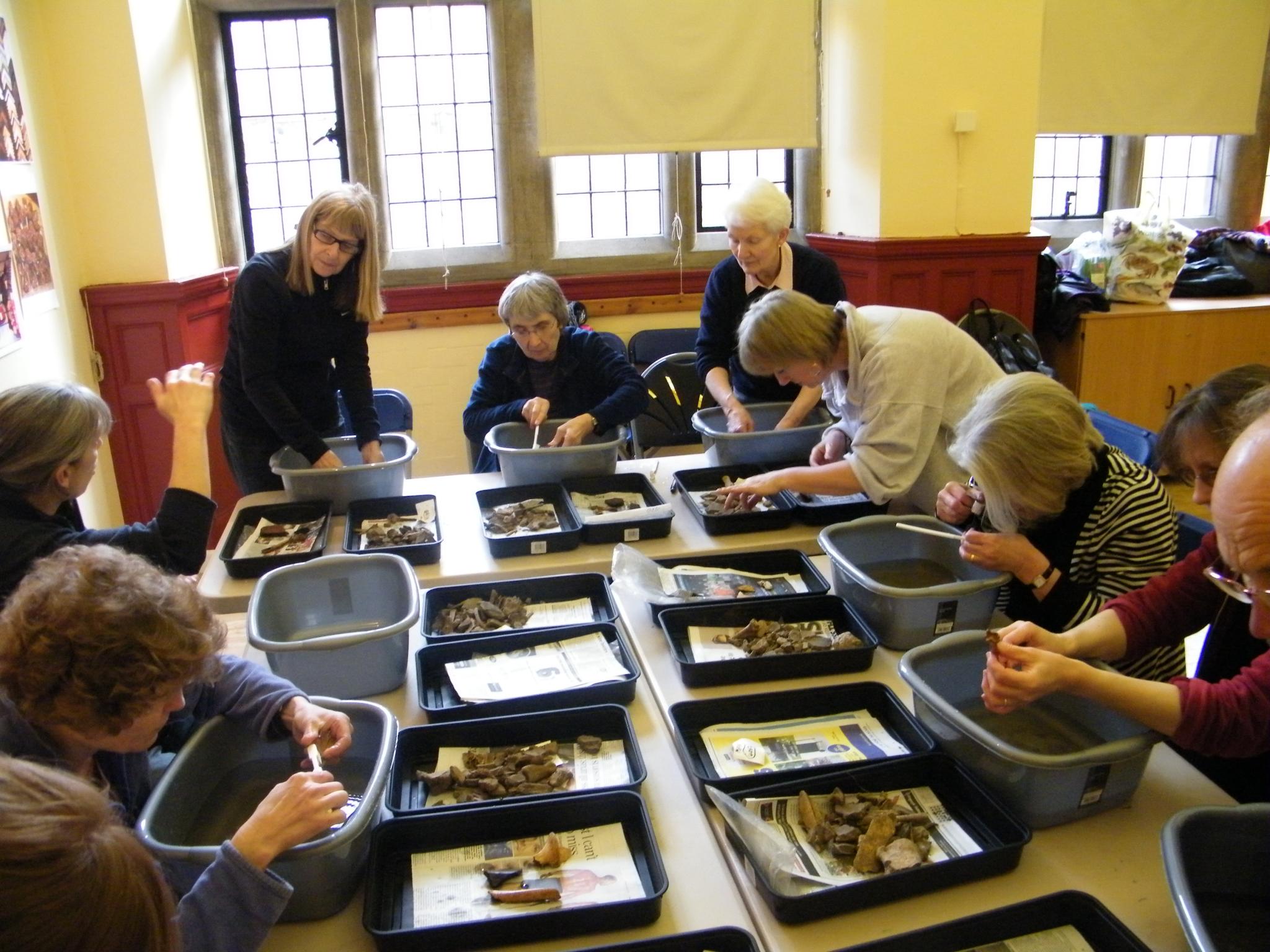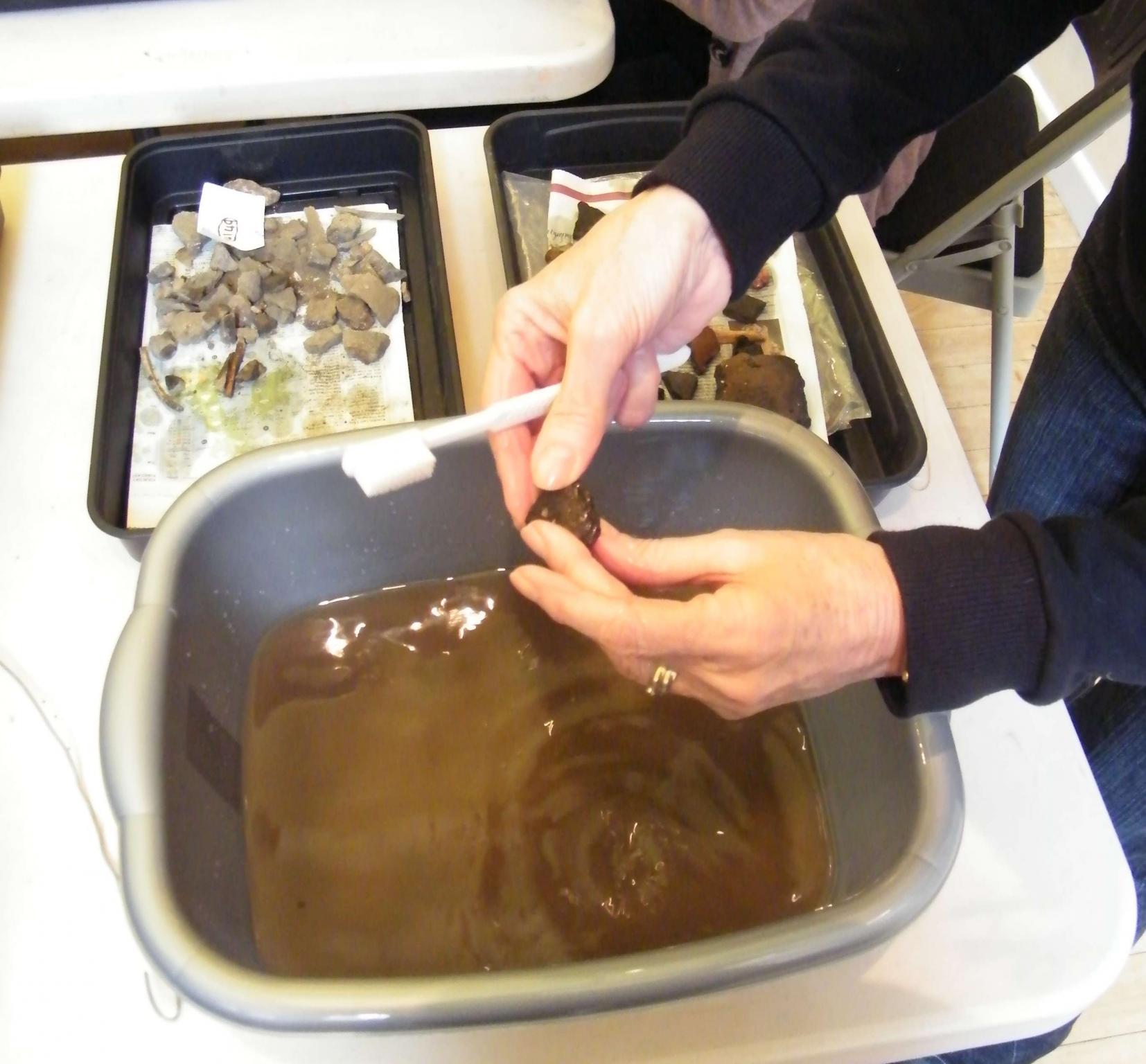
Finds processing with Oxford Museum Searchers group. Photograph: Neil Stevenson
Finds processing (often called pot washing), includes the washing, marking and sorting of bulk finds from archaeological sites and is a very important part of the post-excavation process. It can also be a fun, social activity, and a way to learn more about the everyday archaeological objects that are found on a site.
Before you begin:
- Never process more than one bag of finds at a time.
- Ensure there is a means of identifying the context the finds came from at all times.
All bags should have the site code (comprising a two letter abbreviation for the site and the last two digits of the year of excavation), and context number marked on the bag, and a ‘Tyvek’ waterproof label inside with the same information.
Using two finds trays lined with newspaper, empty the contents of the bag, including the Tyvek label into one of the trays. Fold up and place the empty finds bag under the paper of the second tray. This will ensure the finds can always be associated with a context number. Clean the Tyvek label and bag if dirty. If the bag is particularly dirty, replace it at this time with a clean bag (don’t forget to put the site code and context number on the new bag).
Consider each piece separately before washing. The most common bulk finds are bone and pottery, but other material such as metal, slag, flint, shell, wood, small pieces of tile, brick and other building material will also be placed into the bags on site.
Not all items are suitable for washing. If the object looks too friable to wash, use a dry brush to remove soil particles. Daub, painted glass, plaster and oyster shells (common on some Roman sites), should all be dry brushed.
Iron, which often has corrosion or flaking rust particles should be placed in a separate bag with its own Tyvek label, and both the label and bag should be marked with the same site code and context number as shown on the original finds bag. Always use a permanent marker for this.
Charcoal should not be washed or brushed. Wrap it in tin foil and put in a separate bag with a Tyvek label.
Decomposing glass (with laminated, iridescent layers) should not be washed or brushed.
Washing

Photograph: Neil Stevenson
Using clean water (no detergent) and a brush, immerse one piece at a time and gently brush the dirt or mud of all the surfaces.
Pottery - Make sure the broken edges are thoroughly cleaned. Pottery specialists use these surfaces to look for inclusions such as sand, shell, or grit, which help to identify the pottery type, period, and sometimes the source of the clay.
Bone - Pay particular attention to joint surfaces. These can be used to identify the species and also pathologies such as osteoarthritis. Wooden sticks such as toothpicks or skewers can be used to clean inside the bone and to remove soil from cavities.
Horn and antler – Wash carefully as this sometimes laminates
Flint – Wash with fingers or a sponge. Take care, as the edges might still be very sharp
Don’t overfill the finds tray with washed items, if necessary use a further tray and add a Tyvek label with the site code and context number.
As you work through the contents of the bag check for anything unusual that might be a small find, such as coins, worked flint tools, shale or jet objects. These might be overlooked on site if it’s a particularly muddy day, or if the excavator is inexperienced. An example might be a fragment of worked bone such as a needle or pin, or the off-cuts from bone working. These need to be processed and recorded separately. Always ask your finds supervisor if you are unsure.
When finished, place the finds trays in a suitable drying area and leave until completely dry before re-bagging.











